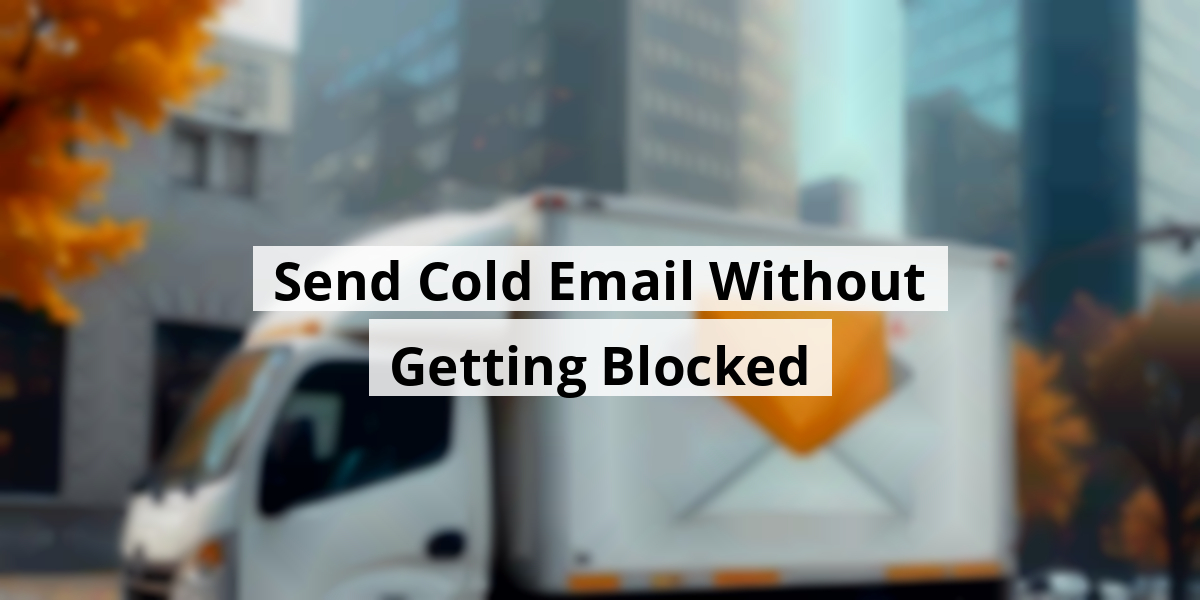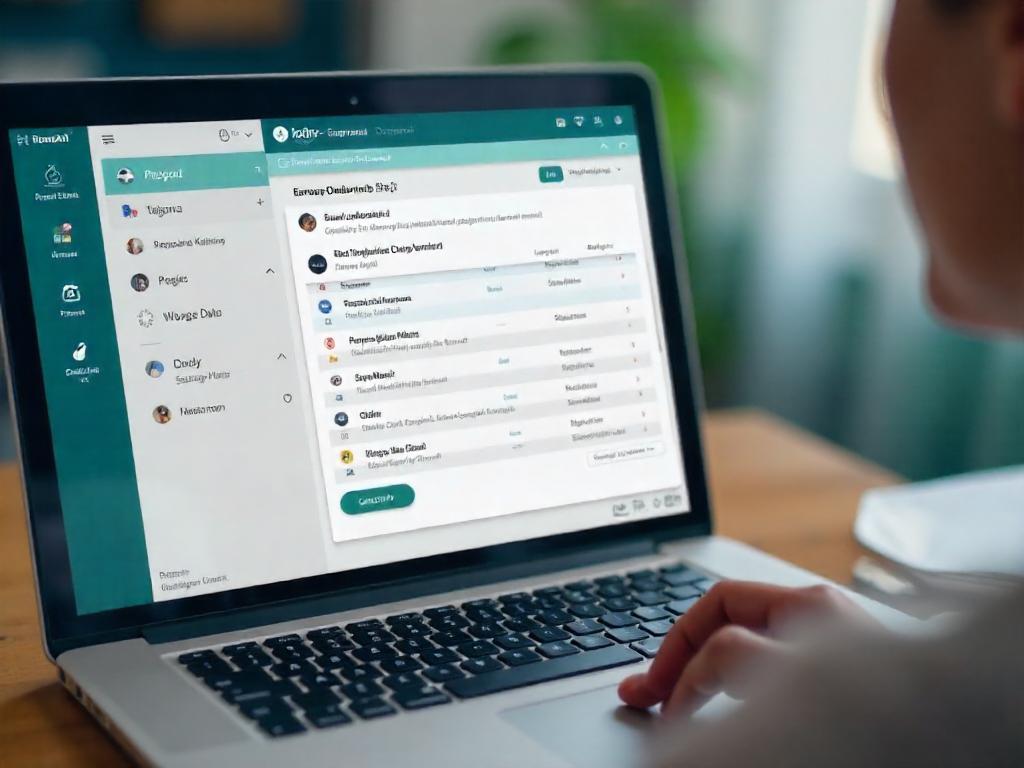 LIMITED SPOTS
All plans are 30% OFF for the first month! with the code WELCOME303
LIMITED SPOTS
All plans are 30% OFF for the first month! with the code WELCOME303

 LIMITED SPOTS
All plans are 30% OFF for the first month! with the code WELCOME303
LIMITED SPOTS
All plans are 30% OFF for the first month! with the code WELCOME303


Now we’re going to talk about one of the most intriguing forms of communication in business—cold emails. Buckle up, because this ride can be both thrilling and terrifying.
A cold email is simply a message you send to someone you've never interacted with before. Think of it as sending a friendly "hello" to a stranger in a bustling café, except this stranger is a potential client or business partner. And, just like in life, you want to make a good impression right from the start.
Picture this: you’re a small business owner, and you notice a local shop with a website that looks like it’s stuck in the early 2000s—sure, the nostalgia is nice, but it’s time to move on! You roll up your sleeves, draft a cold email, and hit send. Suddenly, you have a chance to transform their online presence with your incredible web design skills. Fingers crossed they like what they see!
The funny thing about cold emails is that while they can feel like shouting into the void, they're a genuine opportunity to connect. If executed well, they can transform into lucrative partnerships.
Last week, my buddy tried this with a local gym that had the same rocky website. He brought up their recent promotional campaign, cleverly tied it into his pitch about website optimization, and bang! They’re now discussing a redesign over coffee.
But be mindful of the follow-up. It’s like when you ask someone out—if they don’t reply right away, a second message can sometimes do the trick!
In conclusion, a cold email can be a remarkable tool for making new connections. With the right approach, you might just find that the stranger on the other end is more than willing to chat. Just remember, every great relationship starts with a simple hello—so make yours count!
Now we're going to talk about something that can make or break our email marketing efforts—deliverability. You know, that heart-stopping moment when you hit send and wonder if your email will be lost in the abyss or actually land where it should. Let’s break it down.


Cold emails can feel a bit like throwing spaghetti at the wall—sometimes it sticks, sometimes it doesn’t. We all remember those days when our inboxes were flooded with unsolicited messages, right? It was like a digital version of door-to-door salesmen, minus the friendly smiles. This chaos made email providers, like Gmail and Outlook, step up their game.
To keep spam at bay, they’ve rolled out measures that sometimes seem overly aggressive. So, here’s where deliverability struts in—imagine it as the bouncer at the club, deciding who gets in and who gets left out. Deliverability is simply the promise that your email will actually reach the intended inbox, instead of being shuttled directly to that dark corner of spam land.
Now, let’s talk about what makes an email deliverable. You’re probably wondering if there's a magic formula. Well, grab a snack; here are the essentials:
So, how do we ensure our hard work pays off? Ensuring our emails get noticed takes some effort. It’s like preparing for a first date— you wouldn’t show up in sweatpants, right?
We need to build a strong email strategy, focusing on producing quality content and maintaining our sender reputation. Also, be careful with your list! Every now and then, a little spring cleaning goes a long way, doesn’t it?
As we gear up for our next emailing adventure, let’s keep these pointers in our back pocket. Strategies evolve, trends change, but the core of getting our emails where they belong remains essential. Here’s to hoping we all find that sweet spot in our recipients’ inboxes!
Now we are going to talk about the bright side of sending those chilly emails. Cold emails can be like fishing in a lake—sometimes, you catch the big one, and sometimes you end up with soggy shoes. But, oh boy, when it works, it works wonders!

First off, let’s get to the money talk. Cold emailing doesn’t break the bank. No need for fancy ads or spending a fortune on marketing tactics. Just fire up your email account and whip up a list of targets. It's as easy as pie—let's hope it’s not one of those burnt crusts, though!
Another neat thing about cold emailing? Access to decision-makers! Just like trying to sneak past one of those security guards at a concert, executives often have gatekeepers shielding them. But guess what? Most folks peek at their emails, so if our message lands in their inbox, we might just have a shot at their attention. It's like giving them a backstage pass, minus the awkward high-fives!
And let’s be real: standing out is like trying to find a needle in a haystack these days. Everybody's shouting to be heard, and sending a well-crafted email can be our golden ticket. With the right email, we can cut through the clutter and get noticed by the people who really matter.
So, if all this sounds like a thrilling adventure for your business, let's delve into how to shoot those cold emails without ending up in the dreaded spam folder.
| Benefits | Details |
|---|---|
| Cost-effective | No hefty marketing budget required; just your trusty email account. |
| Access to decision-makers | Reach executives directly since they actually check their inbox. |
| Stand out from the competition | A well-crafted cold email can cut through the noise. |
Next, we're going to chat about some email quagmires that can put a big ol’ stop sign on your sending adventures. When we send emails, it’s like tossing a paper airplane: sometimes it soars; other times, it topples into the bushes. Let's keep that from happening by pinning down what can cause emails to get blocked. Here’s a little roadmap to navigate through common pitfalls. Shall we?
There are several reasons why our communications can hit a brick wall. Let’s break it down into manageable bites so we can chew through these challenges, one by one.
We all know that reputation matters—from social circles to business dealings. Think of your email reputation like that buddy who shows up with party snacks every time. If they consistently bring fruitcake, they might get barred from parties. It's essentially your emailing history, where your behavior determines your "name in the hat." If your sender reputation tanks, your emails might find themselves in spam purgatory quicker than you can say “why me?” So, how do we keep our name shiny in the email world? Regularly check your reputation with tools like Sender Score. It gives you a snapshot of your standing. Should you find yourself in the doghouse, try chatting with your ISP to see if they can assist in polishing your image.
Ever walk into a bookstore and see an entire shelf of self-help books on “How Not to Sound Like a Spam Bot?” That kind of wisdom isn’t just for novels! ISPs are constantly scanning emails, and if they catch phrases that scream "spam," your messages are hitting the spam folder faster than a cat can knock over a glass of water. Steer clear of terms like “free,” “win,” and “deal,” sprinkle in a little calm, conversational tone, and save your exclamations for birthdays and holidays. Trust us, your email grammar teacher would groan at ALL CAPS as well!
Picture this: you roll into a gym for the first time and try to lift weights meant for seasoned pros. Spoiler alert: it won’t end well. New email accounts need a bit of attention before launching into a full-speed emailing spree. Gradually increase the volume of your messages and interact. That's like building your email biceps! A slow approach helps signal to ISPs you’re legit and not just someone who wandered off the street looking for a free party. If you’re tossing a lot of emails, prepare for a marathon, not a sprint. Plus, warm-up services exist to help you look like a seasoned sender in no time.
We’ve all been on the receiving end of relentless emails that make us want to scream. If you don't include an unsubscribe link, not only are you risking people reporting you as spam, but you’re also violating the CAN-SPAM Act. A proper unsubscribe link is like offering a refreshing cup of tea after an intense dinner—cordial and necessary! Put it in a place where anyone can find it without using a magnifying glass. It’s all about keeping things cordial and stress-free.
Each email provider has its limits, like that one friend who always oversteps their all-you-can-eat buffet invite. For instance, Google has different recipient caps between personal and business accounts. Sending too many emails can lead to a nasty bounce-back. Keep an eye on your sending limits and avoid the dreadful suspension chat with your provider! Stay within the lines, and your inbox will thank you.
Bouncing isn’t just what basketball players do; it’s also what your emails might do if they land in the wrong place. Hard bounces mean invalid addresses; soft ones usually stem from full inboxes. Neither one is good news and can give your reputation a nasty bump. Aim for a low bounce rate, update your lists occasionally, and ensure you’re only emailing folks who want in on the convo. Trust us, it’s better than shouting into a void!
If these sound like a secret code, you’re not wrong! SPF, DKIM, and DMARC are crucial for protecting your emails from being spoofed by nefarious characters. Think of them as bouncers at a club, ensuring only the right people get in. They authenticate your emails and keep the wannabe impostors at bay. This trifecta is the backbone of email security, improving emissive guilt by keeping your reputation clean.
Sending to a crowded party can lead to awkward moments! If you’re emailing many people at once, consider using “Bcc” so recipients don’t see each other’s email addresses. No matter how friendly it may seem, some mysteries are best kept under wraps. A well-crafted personal email scores higher than a generic batch send every time!
By keeping an eye on these factors, we can avoid that dreaded “send failed” message and keep our conversations flowing smoothly! So, let’s lace up those email shoes and step into the inbox together! Who’s ready?
Now, we are going to talk about setting up your email account to keep it out of the spam folder. Trust us, it’s not just about sending a charming message; there are a few techie nuts and bolts to consider.


Most of us have been there. One minute you’re crafting the perfect email, and the next minute it turns up in the dreaded spam abyss. Luckily, we can avoid that by following some simple practices to boost our chances of landing in the inbox instead.
First things first - find yourself a trusty email provider, like Google Workspace or Microsoft 365. Just like you wouldn’t want to build a house on quicksand, you don’t want to rely on a flimsily built email system. These providers help keep your emails from getting trapped in a spam filter.
And those SPF, DKIM, and DMARC records? They sound like a secret club, but don’t worry; you’ll find them easier to set up than assembling IKEA furniture. Just toss a few code lines into your DNS settings, and you're halfway there!
This is like sending a guest list to the bouncer at a party. You specify which IPs are allowed to send emails from your domain. Gather all the IPs you’ll be using—your computer, company servers, and any email services you may use. You might end up with SPF records for every domain you own; it’s like having multiple invitations to the same event.
DKIM is your email's security badge, saying, “Trust me, I’m good!” You’ll need to generate public and private keys (2048-bit for extra safety). It’s just like keeping your front door locked; it reassures recipients that your emails are legit.
This is your email's Hall Monitor. It decides what to do when an email doesn't pass the SPF or DKIM checks. Signal whether you want the email redirected, set aside, or rejected like an insincere RSVP.
Time to polish up that profile! A crisp name, an up-to-date title, and a readable email signature go a long way. Think of it as your business card in digital form. Add your social media links, but avoid clutter; no one loves an email with too many hyperlinks!
Imagine throwing a party and immediately inviting the entire town—yikes! Instead, let’s warm things up. Gradually increase your sending volume; think of it like slowly building rapport with a new friend. There's a nifty tool called Warmup Inbox that can help you ease into things without raising any flags!
Nobody wants to receive emails from “coolkid123@gmail.com.” Set up a custom domain for a professional touch. People will take your emails more seriously, and you’ll keep your branding consistent. It's like wearing a suit to a job interview—first impressions matter!
We know that crafting personalized messages takes a bit more effort, but it can pay off big time! Instead of just throwing out generic messages, take the time to address folks by name. Mention something relevant—it’s like preparing a unique birthday card rather than a generic greeting. Everyone appreciates a personal touch!
No one wants to be the one who forgot to verify their new email before sending important notes. It takes seconds, but it saves hours of headaches. Click that link, verify, and make sure your messages land where they need to, or else you’ll face impossible bounce-backs!
Finally, don't get too carried away with sending emails. It’s exciting, but it’s best to keep it between 50 to 100 per day. Like having dessert, moderation is key—too much can lead to some nasty repercussions for deliverability!
By keeping these tips in mind, we can all increase our chances of having our emails reach their intended recipients. That’s worth raising a toast over, isn’t it?
Now we are going to talk about how many emails can be sent without snagging a one-way ticket to the spam folder. It’s quite the balancing act, isn’t it? Let's get into the nitty-gritty!
First off, how many emails we can safely send really depends on several aspects. Think about your email list—like a garden, it needs some TLC. If your list is full of folks who didn't sign up and are just waiting to hit that spam button, we can already see potential trouble brewing.
As a general rule of thumb, if bounce rates creep over 10%, it’s time to hit the brakes. That’s like trying to hawk ice cream on a freezing winter day! Also, if less than 2% of your recipients are clicking through, you might want to rethink your strategy. People generally want to be dazzled, not bored stiff. Keep an eye on that complaint rate too; if it rises, you might as well place a “Please Unsubscribe” sign on your emails!
Different email providers have different rules. Some folks are stricter than that one aunt at family gatherings who won’t stop asking when you’re getting married. The key isn’t just knowing the limits but comfortably staying beneath them. Being flagged isn't just a knock on the door; it can actually open the door to getting blacklisted.
To keep things spiffy, aim for those quality emails that your audience loves. If folks are tossing you into the spam abyss, it’s high time to shake things up a bit. Consider sending between 50-200 well-thought-out emails each day. Hit that daily sweet spot and you can avoid being labeled a spammer faster than you’d finish your morning coffee.
Here’s a nifty checklist to keep your email game strong:
By giving your email strategy a little love, you can ensure you’re not on the receiving end of an angry blacklist. It’s better to cultivate a thriving email list than to risk your inbox being more “out of order” than a pre-school bathroom on pizza day!
Now we are going to chat about what it takes to keep those cold emails flying high and landing where they should—right in the inbox. Think of it as the friendly lift-off before a great conversation.
 Did you know that sending cold emails is a bit like fishing? You’ve got to know both the right bait and the best spot to cast your line, so to speak. So, let’s break this down, shall we? Here’s what we need to keep in mind:
Did you know that sending cold emails is a bit like fishing? You’ve got to know both the right bait and the best spot to cast your line, so to speak. So, let’s break this down, shall we? Here’s what we need to keep in mind: | Key Aspect | Description |
|---|---|
| Quality Emails | Create messages that resonate and offer value. |
| Technical Setup | Configure your DKIM, SPF, and warm up your domain. |
| Relationship Building | Focus on establishing connections, not just transactions. |

